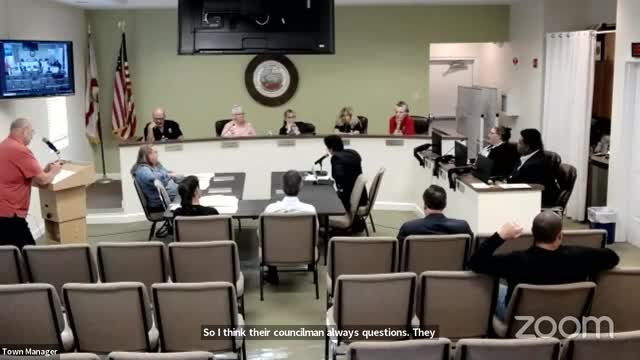Budget Crisis Looms as Town Faces $407000 Shortfall
August 21, 2024 | Town of Loxahatchee Groves, Palm Beach County, Florida
This article was created by AI summarizing key points discussed. AI makes mistakes, so for full details and context, please refer to the video of the full meeting. Please report any errors so we can fix them. Report an error »

During a recent government meeting, officials discussed the town's budget challenges, emphasizing the need for revenue adjustments and potential cuts to maintain fiscal stability. A significant point of contention was the projected shortfall of $407,000, which could necessitate tapping into reserve funds or increasing taxes to balance the budget.
Several committee members highlighted the importance of exploring alternative revenue sources, including raising the millage rate and adjusting fees for services. One proposal suggested increasing the millage to four mills while reducing the assessment fee for agricultural land, which could shift some tax burden from residential to commercial properties. This approach could potentially generate an additional $259,000 from investment properties, while also providing savings to agricultural landowners.
Concerns were raised about the sustainability of relying on reserves, with officials noting that previous budgets had not been balanced for several years. The discussion included the impact of diminishing gas tax revenues and the expiration of certain grant funds, which have historically supported capital projects. Members stressed the necessity of developing a new revenue model to ensure long-term financial health.
The meeting also touched on specific budget cuts, with recommendations to reduce funding for special events and certain public works projects. The Finance Advisory Committee (FAC) proposed removing $100,000 earmarked for a grant seed and $75,000 for converting a building into a temporary emergency operations center.
As the meeting concluded, officials acknowledged the complexity of the budgetary situation and the need for further discussions on how to effectively balance the budget while addressing the town's growing commercial needs. The creation of a business district was suggested as a potential solution to allow for differentiated tax rates for commercial properties, which could provide additional funding for public services.
Several committee members highlighted the importance of exploring alternative revenue sources, including raising the millage rate and adjusting fees for services. One proposal suggested increasing the millage to four mills while reducing the assessment fee for agricultural land, which could shift some tax burden from residential to commercial properties. This approach could potentially generate an additional $259,000 from investment properties, while also providing savings to agricultural landowners.
Concerns were raised about the sustainability of relying on reserves, with officials noting that previous budgets had not been balanced for several years. The discussion included the impact of diminishing gas tax revenues and the expiration of certain grant funds, which have historically supported capital projects. Members stressed the necessity of developing a new revenue model to ensure long-term financial health.
The meeting also touched on specific budget cuts, with recommendations to reduce funding for special events and certain public works projects. The Finance Advisory Committee (FAC) proposed removing $100,000 earmarked for a grant seed and $75,000 for converting a building into a temporary emergency operations center.
As the meeting concluded, officials acknowledged the complexity of the budgetary situation and the need for further discussions on how to effectively balance the budget while addressing the town's growing commercial needs. The creation of a business district was suggested as a potential solution to allow for differentiated tax rates for commercial properties, which could provide additional funding for public services.
View full meeting
This article is based on a recent meeting—watch the full video and explore the complete transcript for deeper insights into the discussion.
View full meeting